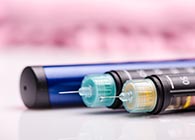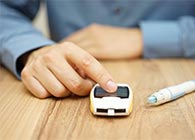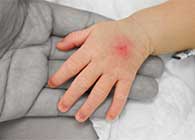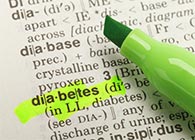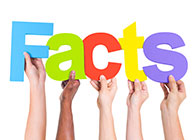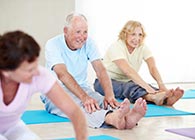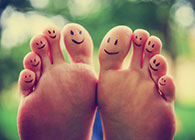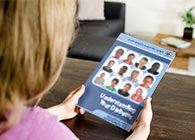Symptoms of Neuropathy Affecting The Feet or The Hands
Diabetic Neuropathy
What is Diabetic Neuropathy?
Neuropathy Affecting The Feet
Advice on Cutting Your Toenails
Symptoms of Neuropathy Affecting Your Feet and Hands
Heel Fissures
Charcot Foot
Wrong Sized Shoes
Neuropathy and Antidepressants
Diabetic Holiday Foot Syndrome
Patient and Family Carer Experience
Diabetes and Hearing Loss May be Due to Neuropathy
Gastroparesis
Symptoms of Neuropathy Affecting The Feet or The Hands
- Tingling or buzzing in the feet [called parathesia] that is often worse at night making sleep difficult.
- Pins and needles [called dyesthesia] which can become intense pain or an intense burning sensation and is described by some people as a painful numbness. It can be intermittent or constant according to how much nerve damage there is and which nerves are affected.
- Muscle pain. This is different from the above in that it is more diffuse and more like cramp.
- Loss of temperature perception – the hands and feet are less sensitive to heat and can be very sensitive to cold.
- Exaggerated sensitivity in the skin [called hyperesthesia] – an unpleasant sensitivity to skin stimulation, just wearing socks or tights can be very irritating to the skin. It seems like an allergic reaction but there are no changes in the appearance of the skin and nothing to actually see. Just minor damage to the skin can be very painful.
Ways of dealing with loss of pain sensation
Correct fitting shoes – clearly it is important to have comfortable, correct fitting shoes. Your chiropodist can advise about this. In an article by Rosemary Murray, a nurse with diabetic neuropathy [American Journal of Nursing, Nov 1993] describes her rules about shoes:
- The most comfortable shoes are running shoes because they are made of soft fabric, provide a shock absorbing thick sole and a lace up top for a good snug fit.
- Obviously there are times when she wants to wear ‘proper’ shoes, so when buying new shoes she makes sure that they are not too tight.
- She never wears a new pair longer than 2 hours at first and then inspects her feet for pressure marks or irritations. A hand mirror is useful to ensure that all parts of the feet can be examined. She repeats this to hour test and then gradually builds up her wearing time.
- If the shoes do cause problems, she throws them away and writes off the cost as a small price to pay for avoiding real foot damage.
Ways of dealing with loss of temperature sensation:
Cold
Dealing with increased feelings of being cold in the hands and feet is easy. For the hands, wearing gloves and increasing their thickness in winter helps. For the feet, wearing heavy socks is not always possible but lined socks are available and these are warm but not very thick. For women thick tights are available and quite fashionable.
Heat
Dealing with loss of sensation of heat is more important because failure to do so can result in severe burns. It is not always the obvious burns from hot water bottles that is the problem but judging everyday things like the washing up water or bath water can be difficult. Usually the forearms or the upper arms are more sensitive to heat so running water over them as a test is a good idea.
Bath Alert
This is an interesting device that is particularly useful for people with diabetic neuropathy where the feet have lost the sensations of pain and heat. There is always a danger of scalds if the bath water is too hot and you can’t feel it because of the loss of feelings in the feet. Bath Alert flashes and sounds a buzzer if the temperature of the water goes above 40 degrees Celsius. It also detects the water level and warns if the water has gone above this and the bath is in danger of flooding. It is suitable for use in bathrooms and kitchens and for children and the elderly.
Ways of dealing with painful neuropathy
- The tingling and buzzing sensation is often helped by physical activity – walking or rubbing the affected area.
- Medical gel packs have been found to help some people. The gel pack has to be chilled in a freezer before use and then is placed on the painful area. These can be obtained from leading pharmacies.
- The pins and needles extending to varying degrees of pain is often treated with pain killing drugs but other options are available.
- Pain control clinics are becoming more available and you should ask your doctor to refer you to your nearest one.
- TENS machines are convenient, safe and effective, easy to purchase and cheap to run. They can be used at home without training and they have a demonstrable record of producing pain relief. Unlike many drugs, they have no side effects. TENS stands for Transcutaneous Electrical Nerve Stimulation. The TENS uses electricity to block the pain messages. It is a small battery operated box with two or four self-adhesive pads that attach to the area around the pain. It can be clipped to your clothes and worn at any time. A 20 minute treatment can give pain relief for quite some time. As there are no side effects treatment can be repeated or extended. Research suggests that not only do TENS machines block the pain messages but they also can stimulate the body to produce its own pain-relieving hormones.
Note: TENS should not be used near the heart or front of the neck and should not be used by anyone fitted with a pacemaker. They can be obtained from larger pharmacies but always talk to your doctor first.
You should explore all these options, or a combination of them, perhaps before going down the easy and obvious route of taking large doses of painkillers.


